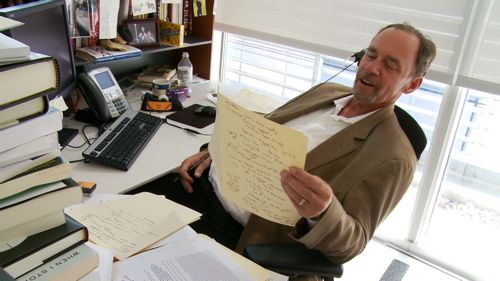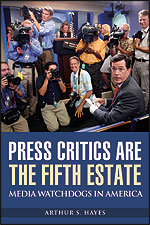Last week’s David Carr column on paid content brought a response from Slate’s Jack Shafer, who reminded us of his love for a product I had frankly forgotten about: Times Reader, a subscriber-only program that lets you download that day’s New York Times and read it offline, at your leisure.
Times Reader is based on some of the earliest ideas for online newspapers — ideas that were washed away by the rise of the Web. Indeed, Shafer even links to a video about the Knight Ridder digital tablet, an early-’90s idea that never came to pass. As envisioned back then, you’d plug your device into a slot on your cable-television box in order to receive newspapers, magazines and possibly books. You’d pay for it all, of course.
 Click on image or here for a Flickr slideshow
Click on image or here for a Flickr slideshow
of page captures from Times ReaderAnyway, Shafer’s latest prompted me to see if a Macintosh version of Times Reader had ever become available. Indeed it had, and I promptly downloaded it for a test drive. Because we subscribe to the Sunday print edition, there’s no extra charge for us. Otherwise, it’s $14.95 a month.
Is it worth it? Reluctantly, I have to say no, except for a certain small subset of readers. If you want to read the Times on your laptop every day in a place without an Internet connection — say, on a commuter train, or a bus — then Times Reader is for you. Of course, even trains and buses are increasingly likely to offer WiFi, so maybe I should describe the target audience as a subset of a subset.
First, the good. The typeface used by Times Reader is strikingly attractive, presented in a three-column format, almost as if you were reading a print newspaper. Because the entire paper resides on your hard drive, navigating Times Reader is very fast. Using the cursor keys, I find that I can skim through the paper much more effectively than I can with the Web edition.
In addition, we all know that the experience of reading a newspaper in print is very different from reading it on the Web. In print, there are boundaries; we’re limited to what the editors have chosen for us. The glory of the Web is that there no limits, but that’s its downfall, too. The temptation is to follow link after link. Before you know it, your intention to read the paper is gone.
Times Reader reimposes those sense of boundaries, especially when you turn off your Internet connection. (There are links, but you can’t follow them unless you’re online.) It’s just you and the paper, so you might as well read it. Unless you are an extremely disciplined person, you’re likely to read more of the Times using Times Reader than you would with the Web edition. If, like me, you don’t have to pay extra for Times Reader, then you ought to give it a try and see if you like it.
So what’s not to like? Quite a lot.
First, despite the attractive typeface and presentation in Times Reader, I actually find the Web version easier to read. The type is plainer, the leading (spacing) wider. I’d also rather have one column to negotiate rather than three. Readability tends to be a subjective judgment, but there you have it.
Second, photography in Times Reader is an afterthought. The Times, like many newspapers, has used its Web site as a way of giving us more, better photojournalism than ever before. Yet Times Reader doesn’t even give us as much as the print edition. There is a “News in Pictures” feature, but it’s completely random and unsatisfying.
Third, the Web edition includes a view of the print-version front page. I have no particular psychic need to have the print edition, but I do like to look at page one to see how different stories were played. You don’t get that with Times Reader, and the organizational scheme is such that, beyond the lead story, you don’t get an entirely clear idea of what’s important and what isn’t.
Fourth, Times Reader isn’t just a closed environment; it’s claustrophobic, even compared to the print edition: there are no ads in Times Reader, and I miss them. Advertising gives you a sense of liveliness, of stuff going on. I hardly ever click on Web ads, but I’m glad they’re there. Of course, Times Reader also cuts you off from all the great online-only content the Times Web site offers — videos, blogs, slideshows and the like.
Finally, I’m not sure all content is present in Times Reader. Last Thursday, for instance, I couldn’t find David Pogue’s technology column (and, as best as I can tell, there is no search function). I was also interested in trying out the crossword puzzle, but the necessary Mac software for my version of OS X (10.5) seems to have been botched.
Times Reader is a valiant attempt to come up with an online newspaper that people will pay for, and it’s something you may consider trying if you want to read the Times in a spot with no reliable Internet connection. But, to my eyes, it’s not nearly as good as either the Times in print or on the Web. Too bad.





 I’ve got an
I’ve got an 